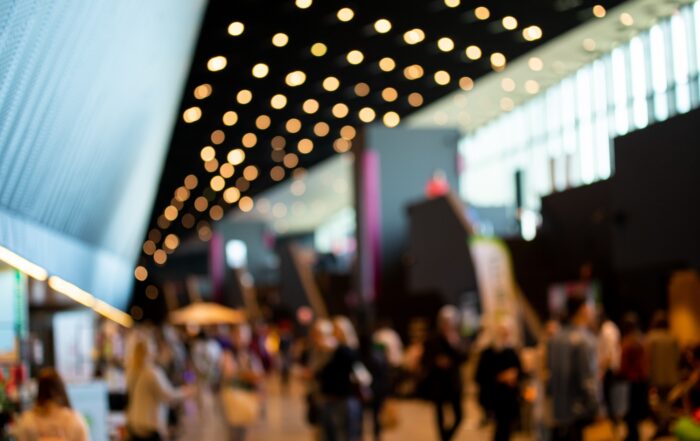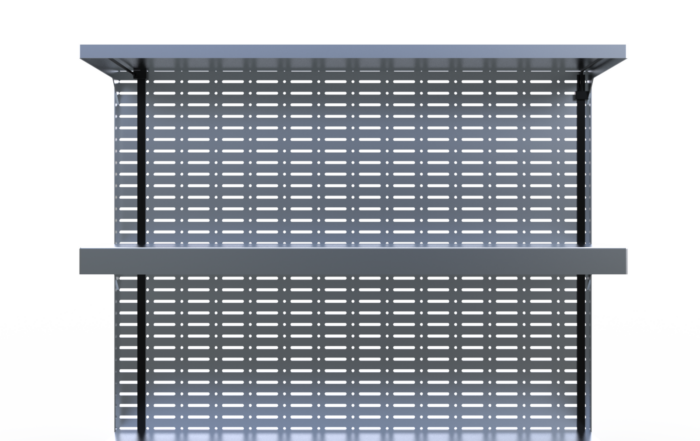The scoop on the most common types of lighting.
The most common types of lighting are direct and indirect. However, you need to know the specifics of these bulbs for your lighting plan to succeed. So, before beginning any lighting installation, it’s essential to understand the distinctions between direct and indirect lighting.
The purpose of direct lighting is to illuminate a specific area or target. However, this leads to uneven and sometimes dangerous lighting. In contrast, a large area can be effectively illuminated using indirect lighting. As a result, they produce soft, uniform illumination.
Can You Explain Direct Lighting to Me?
By definition, direct lighting occurs when a light source shines in one particular direction. This kind of lighting aims to draw attention to a specific spot. Here, the sun’s rays are angled downward, producing a concentrated area of high temperature. A desk lamp is a good illustration of this type of lighting.
When asked, “What is indirect lighting?”
Direct lighting is used to illuminate a small area, while indirect lighting casts its rays downward to light a larger area. Instead of illuminating a specific spot, the light from such a source spreads. As a result, the room is illuminated uniformly and comfortably.
Another benefit of this type of illumination is that it will not enter your eyes directly. On the contrary, it bounces off the floor and ceiling and fills the entire space.
Benefits of Direct Lighting
A straight item is illuminated by direct light. Such illumination is helpful in specific contexts because of its many advantages.
Focus
To highlight a specific detail, direct lighting is typically employed. For example, use a table lamp directed at your book to illustrate this point.
Highlight
Hotspots are created by direct light and draw attention in a particular direction. For example, they draw attention to specific building features or items displayed in a store, museum, or exhibition hall.
Safety
Stairwells and roadways, for example, benefit greatly from direct lighting because it casts a bright light in every direction. For security purposes, they illuminate these places.
Aesthetic
A direct light source in a room can make the decor look more polished. Additionally, it casts shadows, enhancing the aesthetic value of the walls.
Adverse Effects of Direct Light
There are downsides to direct light as well as benefits:
- It puts a shadow over the hash
- Resulting in Screen Reflection
- A distracting glare that’s hard on the eyes
- Badly uneven illumination
- Due to the light’s downward trajectory, the ceiling remains dark
Several Benefits of Indirect Light
Decorations, both indoors and out, make extensive use of indirect lighting.
Deception of Size
In indirect lighting, the source of the illumination is not visible. As a result, it creates the impression of great size. But, even if you can’t see them, the lights will still make you feel good. With their help, you may make a room appear larger and more open.
Lessen the glare
There won’t be any hotspots everywhere, thanks to indirect lighting. Instead, illumination is diffused throughout. As a result, they shield your eyes from the sun’s glare without compromising visibility. An added perk is that these lights won’t show up as reflections on the TV. So, rooms with screens like TVs, PCs, and others benefit significantly from indirect illumination.
Comforting Affect
Smooth lighting and a relaxing atmosphere result from lights cast in from all sides. Which means you can put them to use wherever in your house. In addition to being wonderful at home, they work wonders in business settings like day spas and hair salons.
Focus on Key Elements: Buildings
Indirect lighting is the way to go if you want to draw attention to unusual architecture. Put them anywhere you choose, like on your walls or furniture. They also work wonderfully as a focal point for boats and cars. Thus, they are perfect for use as both indoor and outdoor illumination.
Challenges Associated with Indirect Lighting
Indirect illumination has some downsides that should be taken into account.
- Inadequately bright
- Poor visibility throughout the room if used overhead
Use of Direct and Indirect Light When
If you only need to illuminate a small room section, use direct light. Meanwhile, large areas are illuminated by indirect lighting. Explain the difference between these two lighting.
Benefits of Direct Light
Examples of frequent use of direct lighting include the following:
Place of Residence & Professional Activity
There is a reliance on direct lighting in the home and workplace. For example, you can put direct lighting on the top of a dining table or in the corner of a bookcase. Once again, a good spot over the conference table is a direct light fixture.
Desk Work or Study
The most typical source of direct lighting is the lamp on your desk. The bright light from these fixtures is ideal for reading or working at a desk.
Kitchen
Over the kitchen island, where most of the work gets done, overhead lights shine down. Have enough light to see what you’re doing while chopping and preparing the food. In addition, you can install one above the sink in your kitchen so that washing dishes is a breeze.
Art Gallery and Museum
Pieces of history, sculptures, and works of art are displayed in museums and art galleries. And natural light is crucial to this process! The visitors will be able to appreciate the artwork or sculpture better since the lights are hung so that they fall directly on it.
Lights on the Streets
Indeed, you’ve noticed the streetlights or train track lights. These downward-facing lights are excellent examples of direct lighting. Those lights make a section of the sidewalk or street shine. Therefore, bright lights make it easier to navigate the city after dark.
Aesthetic Purposes Only
As well as serving as practical lights, direct lights can also be used as beautiful accent pieces. Any room or office can benefit from the aesthetic effect of a natural glow hanging from a ceiling or wall. Similar ones serve the same function at hotels and restaurants.
Applications of indirect lighting
The use of indirect lighting is on the rise. As a result, indirect lighting is in high demand indoors, outdoors, or anywhere else. Here I will go over several commonplace applications of indirect lighting:
Illumination from the ceiling and walls
Use indirect lighting to illuminate the ceiling of your home or workplace. As a result, your space will feel more up-to-date and tranquil. Direct light is not used. Instead, an artificial ceiling is surrounded by indirect illumination. For instance, you can use LED neon strips or flexible LED strips to illuminate the top. The light they provide creates a cozy ambiance in your space.
Storeroom Cupboard
Indirect lighting can make your kitchen shine. For instance, you may install LED strips beneath and above the cabinets to draw attention to their aesthetics. Furthermore, there is lighting under the cabinet so that you can see what you’re doing.
Bathroom
To create a relaxing atmosphere in your bathroom, try installing indirect lighting around the perimeter of the ceiling, the mirror, and the bathtub. Here, LEDYi’s water-resistant flex LED strips come in handy.
Vehicles and Ships
Light and flexible LED strips can install under-the-hood lighting in vehicles. Please put them in the trunk, on the hood, or in the space under the seats of your automobile. However, indirect lighting is also great for decorating ships and boats.
Accommodations & Dining
Hotels and eateries that want to attract consumers must have attractive interiors and exteriors. Using indirect lighting to create beautiful décor is another way to boost participation.
Plans for Buildings
Direct light is better for reading maps, but indirect lighting is better for showing off a building’s exterior or interior design. Put them on the outside of the structure and the window sills. Furthermore, they can be used as accent lighting on staircases.
Putting Together Direct and Indirect Light Sources
Direct lighting allows you to focus illumination on a small area. However, while indirect lighting provides overall illumination, it does so at the expense of visibility.
Therefore, use direct and indirect lighting to achieve the desired effect. Still, how could that be? It’s easy to accomplish this.
Let’s say you want to illuminate your kitchen cabinets without directly hitting them. The kitchen will be bathed in warm light from this fixture. However, it would be best if you put up an overhead light fixture at your desk. If you do this, you won’t have to worry about working in dim conditions.
Indirect lighting like this is ideal for lighting up huge spaces. Use direct illumination to draw attention to specific or functional areas.
What are the advantages and disadvantages of direct versus indirect lighting?
Indirect lights are more costly than direct ones, yet they outperform them in many ways. To find out why, please read on…
Light from a direct source is directed in one or more directions. Therefore, they make hash and uneven lighting by making hot spots in the middle. However, in a large room, indirect light spreads out. Consequently, they produce uniform lighting with no hotspots.
In indirect lighting, the origin of the illumination is not exposed. So that your eyes won’t get tired from staring into the light, they produce a calm and soothing ambiance instead. On the other hand, a directional light source hangs low and shines in a specific direction. Consequently, looking directly into a bright light can be stressful on the eyes.
Direct lighting creates a shoddy imitation of studio lighting at a low cost. However, unlike direct sunshine, the light from indirect sources is more natural. Therefore, indirect lighting enhances visibility and detail.
Lighting an area indirectly is a great way to give it a contemporary and clean feel. In addition, a more conventional aesthetic is achieved with direct lighting.
Indirect lighting fixtures employ energy-efficient LED strips, reducing operational costs. On the other hand, direct lighting with fluorescent bulbs is more energy intensive. Therefore, indirect lighting can reduce costs.
Light Scheme Varieties
There are five distinct categories of lighting schemes.
Shining Lights
Up to 90% of the light from down-facing direct lighting sources travels downwards. The curved reflecting surface absorbs the remaining 10% of the upward-trending photons at the top.
Partial Directness of Light
Sixty percent to ninety percent of semi-direct lighting is directed downward. Additionally, 40%-10% of all visible light travels in an upward direction. As a result, offices, hospitals, and waiting areas all benefit from this lighting.
Soft, Ambient Light
Ninety percent of the light in indirect lighting is directed upward. Eventually, the remainder of it will go downhill. These lights are pricey. That’s why you’ll only ever find them being utilized for what they were intended: formal banquets, upscale hotels, etc.
Partial Indirect Illumination
Semi-indirect and semi-direct light sources both emit at the same proportion. The distinction, though, lies in the direction taken. Most of the illumination is skyward (between 60% and 90%). The rest of the lighting is aimed or reflected downward.
Common Place Lights
All directions receive an equal amount of illumination from the overall lighting system. For example, light from a chandelier is one type of ambient lighting.
If you chose direct and indirect lighting, which would you choose and why?
How well light serves its intended function varies. For instance, direct illumination is the best way to zero in on an item. However, indirect lighting does a better job of filling in the dark corners of a large room.
Indirect lighting: how to tell it apart
Lighting that is not directly overhead tends to scatter upward. Moreover, it does not result in the formation of any hotspots. The presence of such an event would indicate the presence of indirect lighting.
Can indirect LED light damage the eyes?
LED strips and other indirect forms of LED lighting are less glaring than their direct counterparts. They spread out instead. Because of this, the eyes are safe when exposed to indirect LED lighting.
A spotlight is what form of illumination?
Spotlight rays that zero in on one target. This means the light is coming straight at you.
Do indirect lights work for outdoor use?
Indirect illumination is permitted in outdoor settings. But for that, you’ll need lights that can withstand the elements. For instance, IP67 or IP68-rated LED strips are completely submersible and can be used in the great outdoors.
Indirect or direct lighting?
Diminished compared to direct illumination, indirect lighting results from its upward diffusion. However, its brightness can be improved by raising its lumen rating.
Conclusion
After reading this, you should be able to distinguish between direct and indirect light sources. So, use direct illumination to highlight an inevitable part of a room. Otherwise, huge areas can be adequately illuminated by indirect light. Still, you can go with both kinds together for comprehensive illumination.





